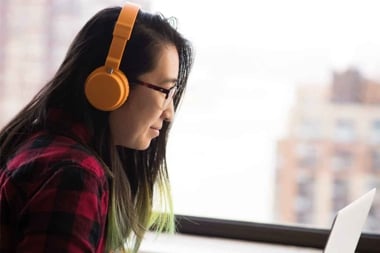
What are the magic ingredients that go into a “good” friendship? From cultivating new ones to nourishing long-standing relationships, the answers are as varied as our unique personalities and experiences.
Good friends
For Jill Bodak, osteopath, best-selling author of Loved Into Being (2022), and speaker on well-being and mortality, friendship is about genuine connection, whether in the form of wise counsel or big belly laughs.
Brooke Gordon, executive coach and founder of Best for Women, emphasizes the role of accountability and deliberateness, including giving truthful feedback, even when uncomfortable.
When Lyn-Marie Farley, founder and principal consultant of Narratives Coaching & Consulting, thinks of a good friend, she pictures “multi-dimensional love” that is uplifting, tender, and built on trust.
Being good friends for Seán Kinsella, nêhi(th/y)aw/otipemisiwak/Nakawé/Irish, director of the Eighth Fire at Centennial College, “is actually about being in ‘good relationship’ with one another.”
Bustling lives
With our many schedule demands, personal priorities, and career ambitions, “the significance of friendships, as part of the support network that sustains us, can become sidelined,” according to Gordon.
Time is key, whether in a new or existing friendship. “Nurturing friendships means carving out availability to connect in an ongoing way,” Bodak points out.
Radical acceptance
“Friendship is about radically accepting people for who they are and where they’re at, and loving them for it,” Kinsella says. It’s about vulnerability over time. “One of my greatest teachers about relationships,” they add, “paraphrases a Cree saying that it takes 1,000 cups of tea, coffee, or ‘Timmies’ to get to know someone. It’s a slow process.”
Creative communication
Farley emphasizes intentionality in her friendships. From impromptu calls to an “I’m thinking of you” text, IG post trades to silly voice-notes, Farley encourages “listening more and talking less, and making sure to celebrate triumphs both big and small.”
Built-in boundaries
“Good friends,” Bodak points out, “have clear yeses and clear nos, and that’s what makes the friendship safe/trustworthy.” And, when there’s a shift in the dynamic, good friends honour new expectations and clear requests.
Changing connections
“In childhood, our friendships seemed effortless because there were classrooms, playgrounds, and parties bringing us together on a near-daily basis,” says Gordon. It can feel much harder in adulthood to meet and maintain friends.
Friendship go-tos
- Volunteer, take classes, and network to meet people with similar interests.
- Ask different questions: instead of “what do you do?”, pose the more meaningful “what is your favourite part of what you do?” for a more unscripted and genuine response.
- Put aside real time to catch up with friends and loved ones every week.
- Find ways to meet friends where they’re at, especially if they are marginalized.
- Share a goal (do a 5 km run or learn pottery) and make a plan to do that together weekly.
- Sneak in time with friends during mundane outings, like grocery shopping or walking the dog together.
- Ask “how can I help?” or “what can I take from you that will make this load feel lighter?”
- Make a commitment to check in the following day after a tough conversation and keep that commitment.
Floundering friendships
As in all relationships, sometimes a friendship can hit a rough patch. Bodak says, “A capacity to acknowledge when things don’t go perfectly makes for a more robust friendship.” Friendship challenges can include physical distance, communication misunderstandings, and natural periods of ebb and flow.
Prioritizing accountability
“Friends are accountable to one another,” points out Bodak, “and must put in effort to maintain contact when life gets moving fast, or someone in the connection hits a low.” Accountability can also involve “apologizing when necessary, fostering healthy conflict, and collaboratively wayfinding through misunderstandings and missteps,” adds Gordon.
Cultural contexts
Farley, who grew up in Barbados, says that there was significant value placed on the collective and forming friendship groups. “The friendship dynamics on an island are different from Canada’s more individualistic culture, where my friendships are more one-on-one.”
Gendered connections
Kinsella believes there are “different expectations by and for genders in colonial, patriarchal societies, in that care work tends to be highly feminized.” But they also believe that we’re all responsible for developing and caring for relationships regardless of our gender identity.
The physicality of friendship
“The loneliness epidemic is real,” emphasizes Bodak. She describes how “our human bodies need to co-regulate through closeness, eye contact, physical play, and shared hobbies, all of which offer measurable health benefits that decrease our chances of getting sick.”
Friendships promote good health
According to a 2023 study published in Epidemiology and Psychiatric Sciences, an analysis of surveys from nearly 13,000 people aged 50 years and older found that having good friends was associated with a 9 percent increase in likelihood to exercise, a 17 percent reduced risk of depression, and a 19 percent lower likelihood of having a stroke, among other findings.
Long-distance love
Meanwhile, digital platforms can be a lifeline, as is the case for Gordon. From email to group chats, tech can keep close those who live far away. And, Kinsella points out, while not a substitute for touch and intentionality in real life, using technology can really help stay connected when it’s not possible to ethically do so in person, for example, when protecting each other from COVID.
Role-modelling friendships
Bodak says, “[I’m] constantly aware of all the things my kid is learning from me. Demonstrating friendship means having him see that loving people and having fun aren’t just for kids, but for adults too, and that he belongs to a larger world.”
Kinsella says, “At our core, we are all relational beings, and we need a variety of strong and meaningful relationships.”
This article was originally published in the September 2024 issue of alive magazine.





